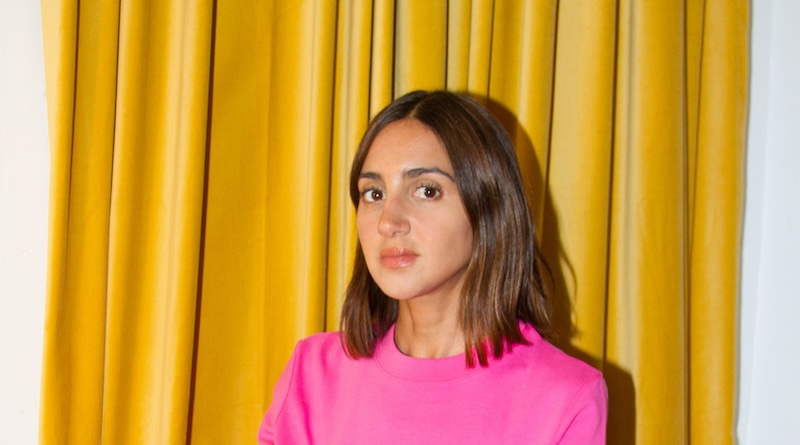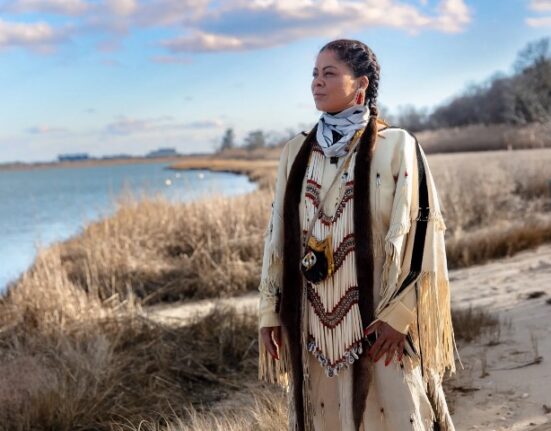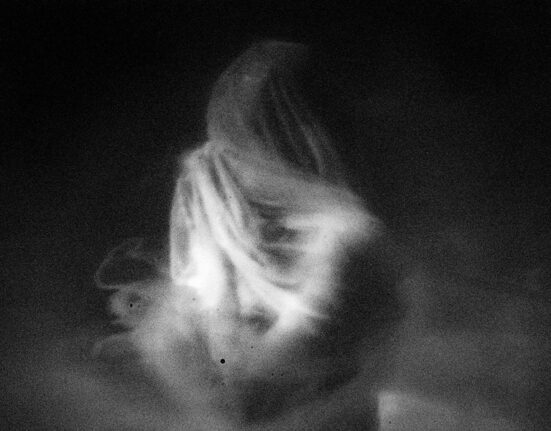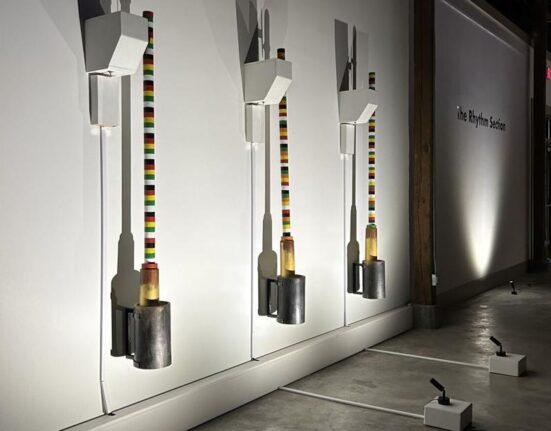Illustrator Pepita Sandwich discusses changing forms, developing a healthy relationship with social media, and connecting to the world through your work.
You create autobiographical visual essays where you share stories of your daily life, emotions, and family stories. How do you decide what parts of your day or multiple sketches become the official piece?
In my work, I always try to bring this sense of the invisible. I’m always very interested in capturing a feeling and then translating that into visual form. I’m interested in translating feelings into comics. I feel like I’m a translator of the more abstract or surreal words or feelings, translating that into something that can be very visual and has a lot of visual metaphors is what gives me that spark and that excitement of creating comics.
I use a lot of symbolism or metaphors to convey those abstract elements, but a lot of these feelings have to do with my own experience. And my work is very nostalgic, a lot of the things that I write about are things that I experience. In a way I want to capture a moment and make it last forever. But also in a world that goes fast, I want to suspend time and explore a feeling or an experience, and then share that in my intimate world, but then understand that I’m not the center of the universe and that a lot of people might have the same feeling at the same time. That might help other people to know they’re not alone, and it also helps me to get out of my head and not feel like I’m the center of all these problems.
Whenever I’m doing visual essays, I usually start with something that I experience that I feel it’s important or that will resonate with the world because something is happening that gives me the idea that a lot of people might be experiencing the same thing. I usually start by saying, “I’m feeling this way,” or “I’m having this experience.” I try to get out of my mind and put myself in other people’s shoes try and have empathy see the world through others, and expand that narrative into something more universal, maybe bring it back to myself to give a conclusion. I try to be as permeable as possible to things that are happening. So very intuitive, thinking, reading, and seeing other people’s work not only on social media but also by reading, going to the movies, seeing what’s happening, and being connected to other experiences.
How do you find the balance between telling the story with words and showing it with images? How does the written part nurture the visual side?
It depends on what kind of work I’m doing, but with my visual essays, I start by writing a script. I write the words, and then with the drawings, I try to expand that idea or maybe take it to a different plane. I try to not repeat whatever I’m saying with words to what is in the drawing. I try to give it another layer of an understanding through the drawing and maybe using visual metaphors to make the drawings a little bit more weird and surreal. I try to connect words and images in weird ways and not be super obvious about what I’m drawing. The drawings are more of an exploration of what else I can add to that sentence or that text.
For other comics that are more poetic or personal work that I do where I do more abstract feelings and there’s not much of a narrative or things that have a sense of research, it’s more like a feeling. For that, I start by drawing first, and then I add the words. I do a lot of different exercises in my creative practice where I maybe go to a store and draw things that I see there, or I grab a book and I draw different words that I find there, and then I add the actual text.
And in that way, I feel like the drawing is more intuitive, and then the same drawing, it’s giving me clues to find the words. I don’t know if that makes sense, but sometimes by just drawing first whatever I see and then finding what those drawings are trying to tell me, I discover something new.
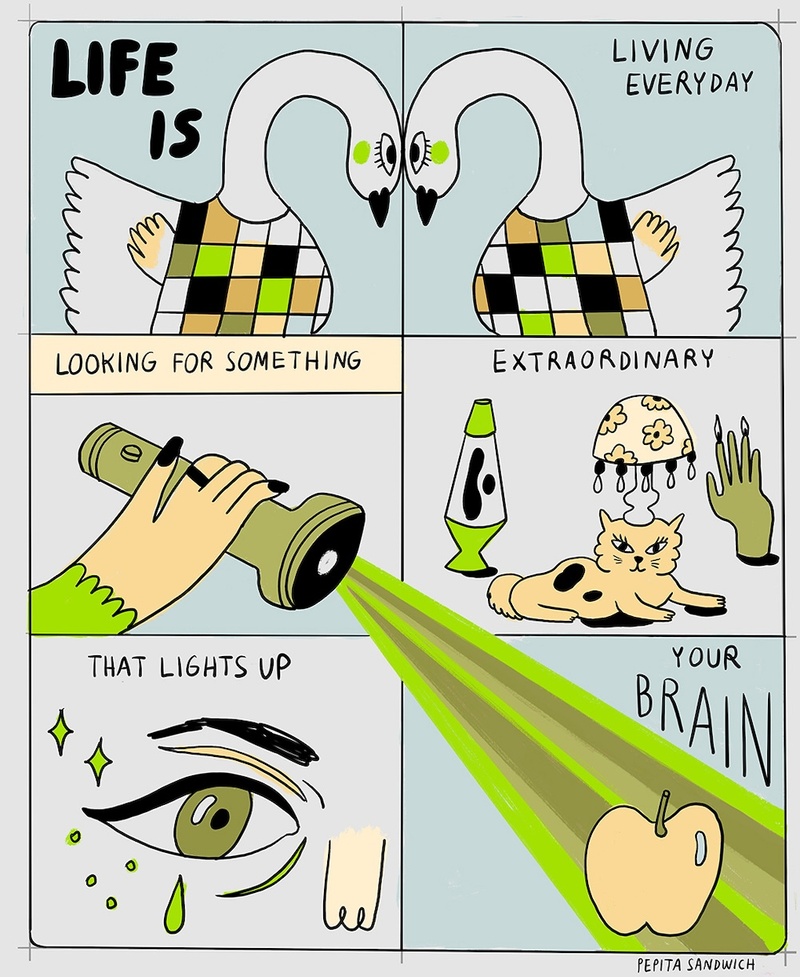
Do you have a creative exercise that helps you when you’re trying to find inspiration or when you’re feeling creatively stuck?
I started my career on the internet, and I’m on the internet a lot for work, for my own platform, and for expanding my practice. But for the last couple of years, I’ve been trying to find images outside of the internet. I try to go to a museum every Friday and I draw parts of different paintings or sculptures or find images that inspire me. And after drawing them, I connect them with images.
Here in New York, I love going to the Strand because they have a lot of used books, or even going to thrift shops and drawing the old vintage decorations or objects or even things from illustrated books from another time. I feel like that’s a very interesting way of connecting with the past and also surprising yourself because if you’re finding images that are not given to you by an algorithm, it’s more like you are creating your own algorithm of reality.
Can you tell me a little bit about starting your career on the Internet?
I went to fashion school in Buenos Aires because I thought I would have the creativity and the drawing part, but also more of a commercial side. When I finished, I moved to Italy because I won a scholarship to study photography. When I was there, I discovered the career of illustration. So I started drawing whatever new experiences I was having and even what I was buying.
That was during the beginning of social media in 2011. So I downloaded Instagram and started sharing my drawings online I gave myself a challenge. I said, “I’m going to be my newspaper.” So I hired myself and I was sharing one drawing every day. There were not a lot of illustrators or cartoonists back then on social media, and it was very natural how some people started sharing my comics and I started to have a larger audience. And in 2016, my Argentinian publisher asked me if I wanted to make a book with them. So I had my first book deal in 2016. I feel like that came because of my online presence.
I feel like before the internet or before social media, you had to go with your work to ask for these opportunities. Because I started in those times, the opportunities came to me because I was showing my work. Now I have a more complicated relationship with social media. There’s too much content, and it has a lot of repetition, and I’m a little bit scared of also making work that is just answering to the need of someone reacting to your work. I’m in that complicated stage where I don’t want to repeat myself, and I don’t want to make work that I know is going to be liked by others just because I understand how social media works.
I still think it’s a good platform and a good way of showing the things that you are interested in telling. It’s a good way of telling stories and sharing with people around the world, and it connects a larger audience, but it’s definitely more complicated than when I started. There’s a lot of content, and sometimes can make me dizzy, or it makes me go into this spiral of thought that I don’t like. I’m trying to have a more healthy relationship with the internet. And that’s why I love making books because I feel like the classic way of making art is always going to be there, like making books or movies or paintings or even videos. But when it’s outside of the boundaries of the Internet, it’s always something where you are going to find a lot of truth. Right now on the internet, the boundaries between what is true and what is fake are very blurry.
You’re aware of this fear of repetition or doing work that is liked. What does this repetition mean to you?
I’m not scared of repeating myself because I have a lot of topics that I’m interested in. For example, I do a lot of work that revolves around crying and emotions and these physical reactions that are related to our brains and emotions. But I feel like sometimes when you are immersed in these platforms where you share your work, you can also be consuming a lot of different content, and there is an impact on your brain. All these images stay with you for a little bit. And I’m scared sometimes of being affected by these images and then producing work that is contaminated by all these videos and other images, and I guess it’s impossible not to be affected by that. But I always ask myself, whenever I finish a comic or whenever I’m drawing, is this authentic to myself and is this something different that I want to share?
I’m still on the internet and I’m still going to be there, but whenever I’m doing work for myself, I try to ask, how can this be more weird? How can this be more different? How can this be more authentic? Pausing for a little bit after finishing something or taking a minute before posting something is helpful, when I pause, I ask myself if this is something that is authentic and resonates with my reality, and if is it something real that I want to transmit. Pausing for a minute and then acting has an impact. Because things on the internet move really fast, and something happens around the world and everyone is reacting to that, and someone posts something and a lot of people share it, and it’s so fast. We need to take a minute and process that information and what we are trying to say and then share it.
I wanted to talk about the concept of having your “own voice” and the expectations that artists should have their “own voice” in their work. What does that mean for illustrators and people that make comics and cartoons? Because if I see something that is your work, now I can tell that is your work by seeing it. Does the concept of having your voice come with certain limitations? How does that concept overlap with progress and experimenting?
I think the artistic voice is something that is always evolving and changing. When I look back to my work that I started doing and posting online in 2013, sometimes I’m like, oh no, I’m a little bit ashamed of having that online. But also I’m proud of the process, and I think starting “ugly” is something that it’s not important, but you cannot avoid that. And you’re always going to see your evolution and how your voice changes and your drawing changes because you are human, and you’re always learning, you are always changing. So that’s inevitable, not having that change in your work. In my case, I feel like I’ve been finding my voice since I started my career.
It all started more like playing. I was not conscious of what I was doing. I was more into this state of play. Once I decided and realized I could make work that had some impact, I started realizing the power of comics. I think comics are a potent tool because they have a way of explaining things that is very visual and easy to understand. Drawings are such a primitive language for all humans, and we start by drawing when we are little and we don’t even know how to write, and we understand the world through drawing a lot of times. And even letters are drawings, like the symbols are drawing. So we biologically need drawings to understand the world around us, to connect, and to express and relate to others.
In my work, the evolution was very clear, I started by understanding the world and just putting things out there. Now I refined that tool more and more. I feel like comics can go across cultures and even languages, and a lot of people aren’t going to understand what’s going on because of the drawings. So it’s a very universal tool that we have. Your voice can come in visual form and with words, but it’s always changing. Right now I find that my voice is in constant evolution.
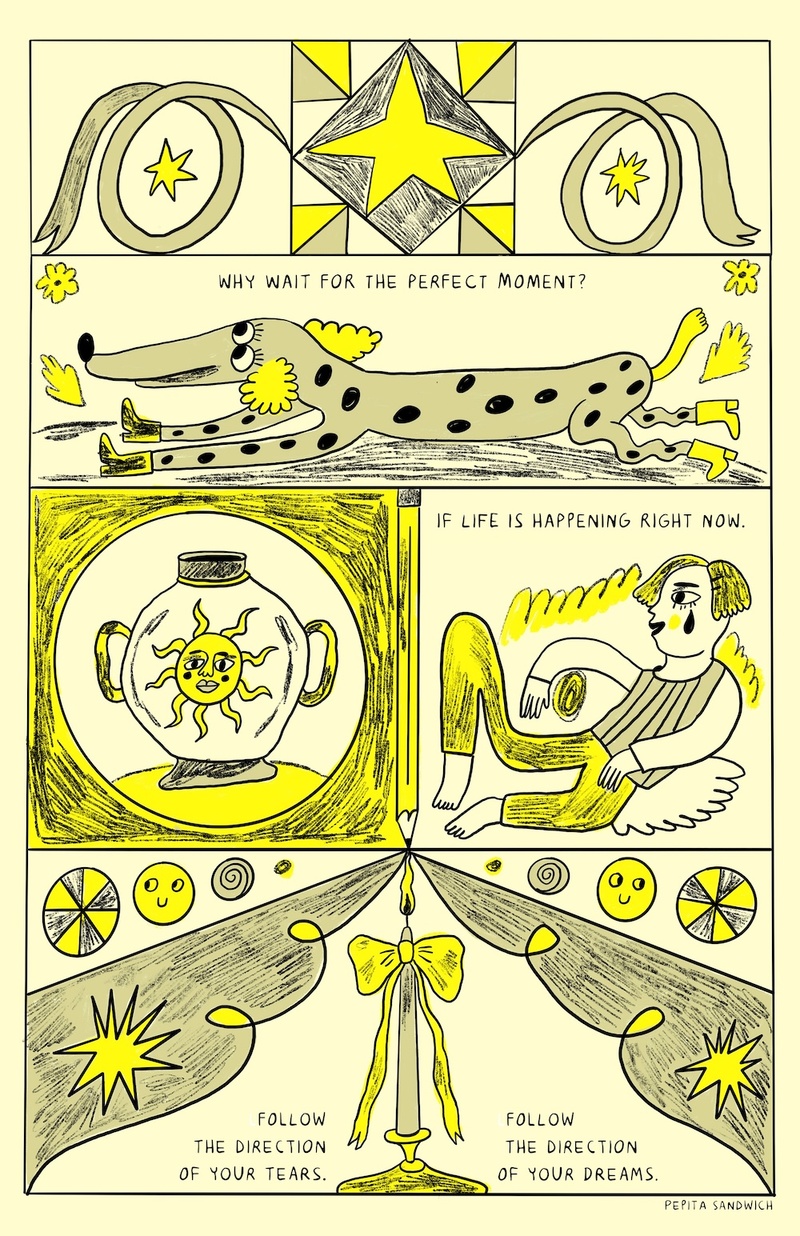
You just mentioned how starting ugly is something that is not important, but I’m sure that many people might be afraid of that. Is there any advice that you have to overcome that expectation of how things should look like?
I have a lot of students and there’s always a fear and they always say, “Oh no, I can’t draw. I don’t know how to draw.” And I feel like we all know how to draw. It’s a very human tool that we have. And I think ugly drawings or things that are not realistic are beautiful. I find a lot of beauty in drawings from people who never draw. There’s such a beautiful and moving connection with drawings that are not realistic and do not use any rules of perspective or even shadows or proportions because I feel like we all use our hands as the connection between our brain and the world.
Just having those different lines from different people seeing the same thing, observing the same objects, and their drawings are going to be so different that I feel like that’s very moving, and it’s humbling, and it’s a very human experience. It’s like the more human that we can get. Now in an era where we have a lot of artificial intelligence and we have all these repetitions on the internet, going back to that very human movement or that human first impression on paper is the most beautiful thing you can find.
When I have students that maybe struggle or they feel like they don’t want to share their drawings or they feel like their drawings are ugly, I just share that we all can draw, and we all can express our emotions and our human condition through lines, and that you don’t have to make a perfect representation of an object to just transmit that this is that object. There are so many symbols and so many different drawings that we can do that are not even realistic representations. For example, hearts and how we draw hearts. It’s not the actual representation of a heart, but we all know that that symbol is universal for love or emotion, and it’s a very simple symbol. So I think just using our lines, and our bad drawings to express something is very interesting, and I feel like we all can draw.
Have you ever abandoned a project that you dedicated a long time to or that you invested time and energy in and at some point realized that it wasn’t working?
Sometimes I have parallel projects that I am working on that I abandon for a little bit. And then maybe I go back to them, especially with abstract painting. I also have a sewing machine, and I work with textiles, but that is something that I don’t share a lot with my platform or my audience. It’s something that I keep more in private practice. And I don’t feel like I abandon them, but I just let them rest for a little bit, and maybe then I go back to them.
I feel like artistic practice can take many forms. And I’ve explored music. I’m not a musician, but I wrote songs for my second book. I have also done animation. I’m interested in maybe one day doing a short film or even a live-action film. Sculpture is something that I also think could be a nice route to explore. I feel like your own work can take many forms. For me, the projects that I have on the side or that I don’t finish, are there, they help me also enrich my main practice. I try to mix them all. And if I’m doing a more abstract painting, maybe some aspects of that painting come and leak into my comics. But I think the projects that take the longest right now are books. And the books that I’ve done, I finished almost all of them. I have one fiction book that I started and didn’t finish, and maybe someday I will go back to that and will continue it or not. But all those projects that are on the side are always informing my main projects. They’re all part of the same universe, and they are all necessary elements of a bigger scope of work.
I love what you just said about how your work is not limited and can take many forms.
I love Laurie Anderson. She’s one of my heroes, she always says that she’s a multidisciplinary artist and that she doesn’t know what that means, but it helps her not be stuck in one medium. I think that when you start, it might be important to just name yourself as something. Sometimes just naming yourself as a writer or illustrator, can be important because it allows you to think in this artistic way. But then if you can expand those limits into other forms, they’re all ways of expressing. And if you have something to say, you can take that discourse or that voice into so many shapes and forms.
For me, just calling myself an artist helps because I’m not limited to one practice. I wish sometimes I could have more days, more hours, and days with 100 hours so I can explore all these different routes. And time is a limitation a lot of times. But I find joy in changing forms. And we were talking about maybe repetition and being immersed in all this visual information that can be very distracting and can blur your vision a lot. But if you are always exploring different ways of making art, for me, it’s an interesting way of finding new shapes and things that are not over-repeated.

